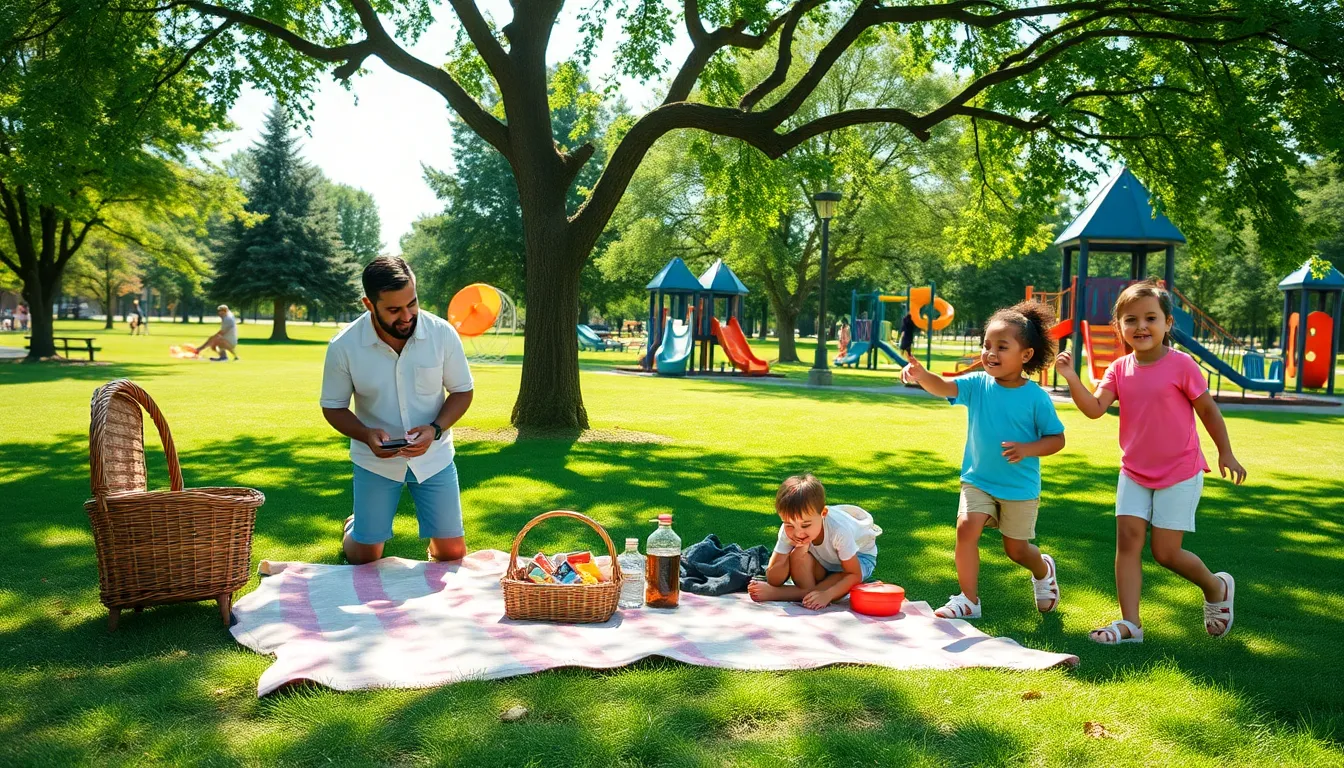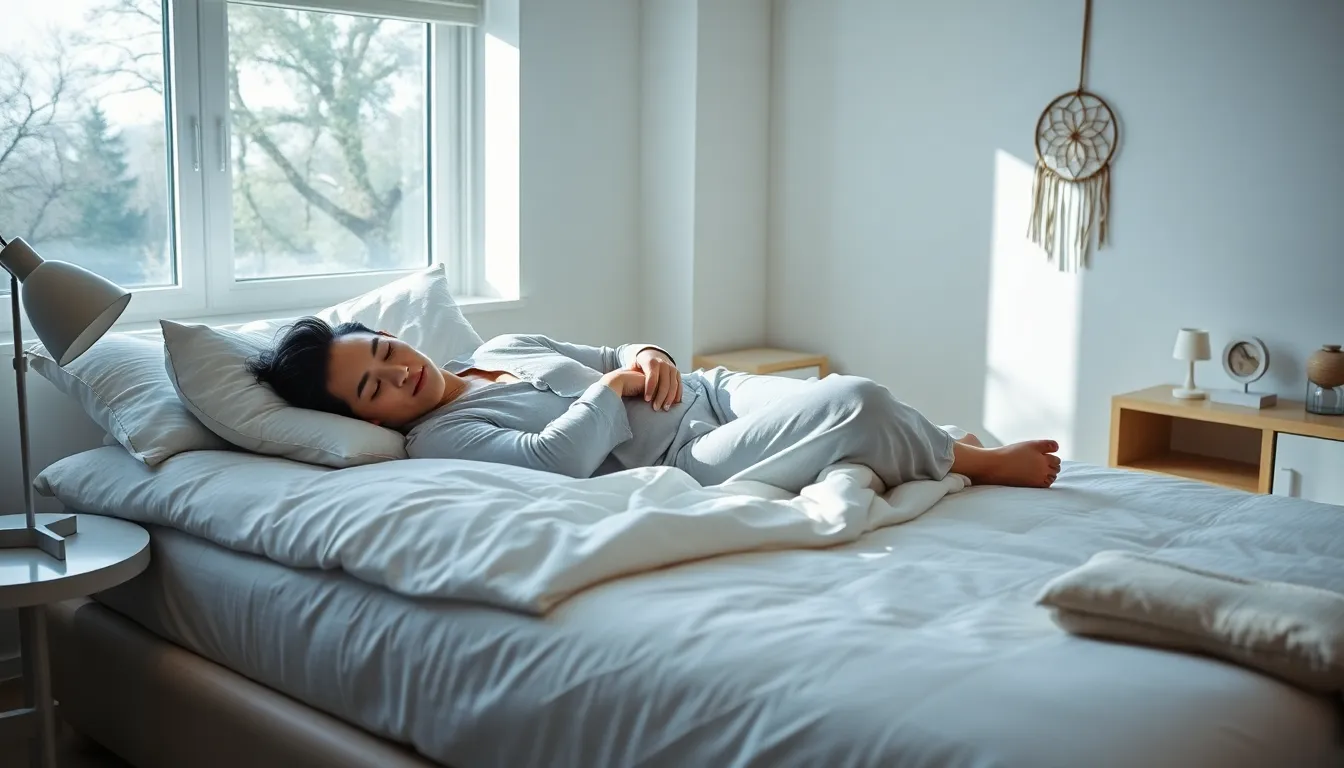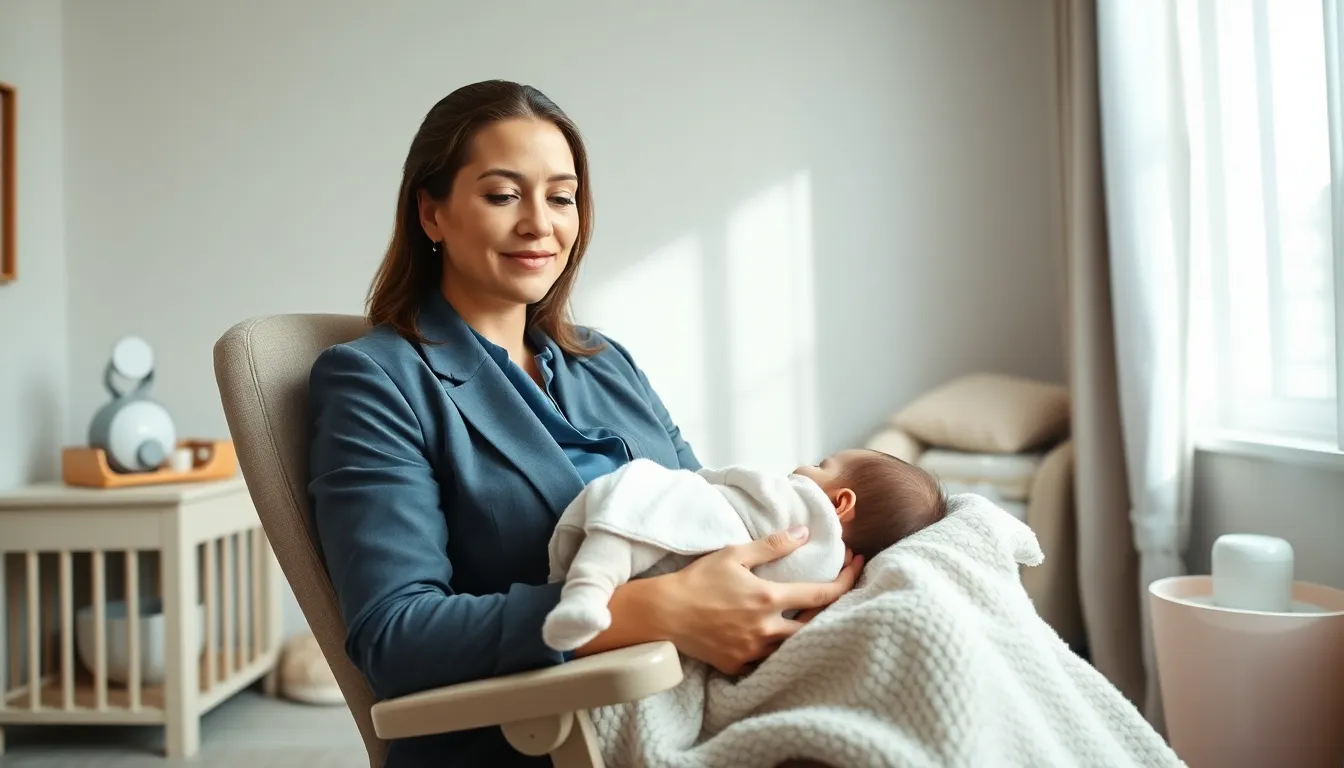When it comes to baby sleep, parents often feel like they’re navigating a minefield of advice and opinions. With so many guidelines out there, it’s easy to feel overwhelmed. But fear not! Understanding infant sleep safety standards can be as straightforward as counting sheep—if sheep wore helmets and had a strict bedtime.
Table of Contents
ToggleOverview of Infant Sleep Safety Standards
Infant sleep safety standards focus on reducing risks associated with sleep practices for babies. Guidelines emphasize placing infants on their backs for all sleep times, including naps. This position helps lower the occurrence of sudden infant death syndrome (SIDS).
Cribs should meet safety regulations that include fixed side rails and sturdy construction. Parents must select cribs certified by the Consumer Product Safety Commission (CPSC). Using a firm mattress covered with a fitted sheet is essential for infants’ sleep surfaces.
Bumper pads, pillows, and soft bedding pose dangers and should not be present in the crib. These items increase suffocation risks. Toys and blankets also belong outside the baby’s sleep area to ensure a clear environment.
Room-sharing with infants is encouraged, but infants should sleep in their own cribs. It’s recommended that parents stay within arm’s reach during the night. Implementing pacifiers at nap time and bedtime may further aid in reducing SIDS chances.
Temperatures in the sleep environment should be comfortable, maintaining a range from 68 to 72 degrees Fahrenheit. Dressing infants in sleep sacks or wearable blankets provides warmth without raising the risk associated with loose bedding.
Frequent observations of infants should occur during sleep, paying attention to their breathing patterns. Practices such as avoiding smoke exposure and ensuring prenatal care contribute to better sleep safety outcomes for infants. Understanding these standards helps create a safer sleep environment, fostering healthier sleep habits for infants.
Importance of Following Sleep Safety Guidelines
Following sleep safety guidelines protects infants and promotes their well-being. Adhering to established standards ensures a safer sleep environment, which is crucial for healthy development.
Reducing Risks of Sudden Infant Death Syndrome (SIDS)
Placing infants on their backs for all sleep times significantly lowers the risk of SIDS. Crib safety should include features like fixed side rails and sturdy construction, certified by the Consumer Product Safety Commission (CPSC). Soft bedding, including pillows and bumper pads, poses a suffocation risk and must be avoided in cribs. Implementing room-sharing allows parents to remain within arm’s reach, ensuring they can respond quickly if needed. Using pacifiers during nap time and bedtime further decreases the likelihood of SIDS, providing an additional layer of safety.
Promoting Healthy Sleep Habits in Infants
Creating a comfortable sleep environment plays a vital role in fostering healthy sleep habits. Maintaining room temperatures between 68 and 72 degrees Fahrenheit ensures infants are neither too hot nor too cold. Dressing infants in sleep sacks or wearable blankets offers warmth while minimizing risks linked to loose bedding. Observing infants during sleep allows parents to assess their safety continually. Avoiding smoke exposure contributes positively to infants’ health and enhances overall sleep quality.
Key Sleep Safety Standards for Infants
Infant sleep safety standards play a critical role in promoting healthy sleep habits and reducing risks for infants. Understanding these standards simplifies the process of creating a safe sleep environment.
Sleep Environment Recommendations
A safe sleep environment includes several crucial elements. Cribs need to meet safety regulations set by the Consumer Product Safety Commission (CPSC). Fixed side rails and sturdy construction are non-negotiable features. It’s essential to keep cribs free from bumper pads, soft bedding, and pillows, as these items significantly increase suffocation risks. Maintaining a room temperature between 68 and 72 degrees Fahrenheit supports infant comfort. Dressing infants in sleep sacks or wearable blankets instead of loose bedding provides an added layer of safety. Frequent monitoring during sleep contributes to overall safety, ensuring parents can quickly respond to any concerns.
Appropriate Sleep Positioning
Positioning infants properly during sleep is vital for minimizing the risk of sudden infant death syndrome (SIDS). Infants should always sleep on their backs for all sleep times, including naps. This position helps keep airways open and reduces risk factors. Room-sharing is encouraged for nighttime safety, though infants must remain in their own cribs or bassinets. Keeping parents within arm’s reach allows for quick responses to any needs. Introducing a pacifier at nap time or bedtime can also help decrease SIDS chances. These simple positioning strategies contribute significantly to a safer sleep environment for infants.
Common Misconceptions About Infant Sleep Safety
Many parents believe that having their baby sleep on their stomach is safe. Research indicates that placing infants on their backs for sleep significantly reduces the risk of sudden infant death syndrome (SIDS). Others think cribs can have bumper pads for comfort. In fact, these items pose serious suffocation risks and are not recommended.
Some assume room-sharing means infants can sleep in bed with parents. Experts advise that infants should sleep in their own cribs while parents remain within arm’s reach. This arrangement ensures safety, allowing quick access while minimizing risks.
A misconception exists around maintaining a warm environment for sleep. The ideal sleep temperature for infants ranges from 68 to 72 degrees Fahrenheit. Dressing babies in sleep sacks or wearable blankets supports temperature control without the dangers of loose bedding.
Numerous people express concern over pacifiers. However, studies suggest that offering a pacifier at nap time or bedtime may further lower the chances of SIDS.
Some parents worry that frequent observations during sleep might disturb their child. Regular checks are crucial for safety, as they help parents respond to any unexpected issues swiftly.
Furthermore, many undervalue the significance of smoke exposure. Evidence shows that smoke increases SIDS risks, highlighting the need for a smoke-free environment.
Addressing these misconceptions is vital for promoting safe sleep practices. Parents can feel confident that understanding and implementing accurate infant sleep safety standards leads to a safer sleep environment.
Navigating infant sleep safety standards can feel daunting but understanding the essentials makes it manageable. By adhering to the guidelines outlined, parents can significantly reduce risks associated with sleep. Prioritizing safe sleep practices not only protects infants but also fosters peace of mind for caregivers.
Creating a safe sleep environment involves simple yet effective measures such as proper crib setup and maintaining a smoke-free space. Parents can confidently support their child’s healthy sleep habits while ensuring their safety. With the right knowledge and vigilance, they can provide a nurturing atmosphere that promotes restful sleep and overall development.








